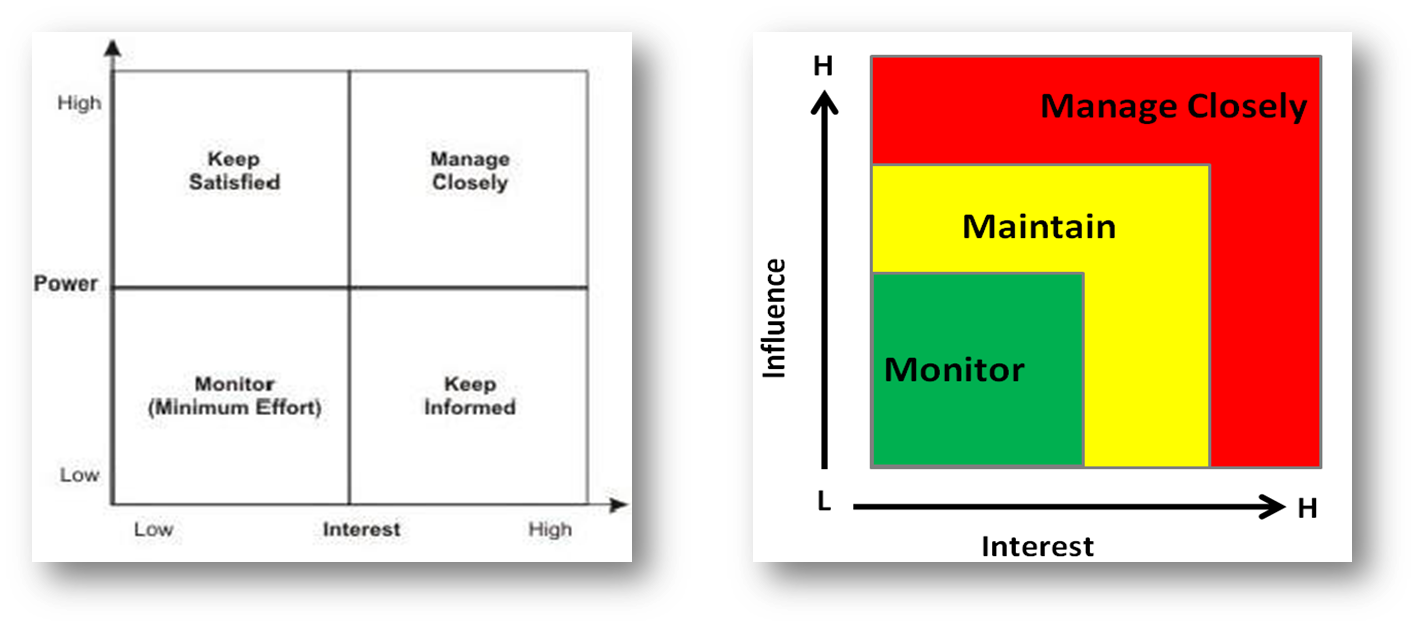Imagine, if you will, that you're at the beginning of a workday. You sit down, turn on your computer, open your email, and there it is: A new, juicy piece of info that impacts a project you’ve been working on. It’s exactly the answer you were hoping for, and it makes it super easy to know what actions you need to take next. But then you remember: you’re the only one who knows it. You know others need to know, but you aren’t quite sure who. How can you tell who needs it and who doesn’t? Who needs it first? How do you send it out? Dawn Ealy offered great insights into these questions in an episode of the Even Better Podcast, and I wanted to offer some additional resources as well. If you’ve just received info that needs to get out, here are four steps for figuring out who needs to know and how to tell them about it.
1. Use a Stakeholder Registry and Analysis Tool
Perhaps formally or informally, hopefully, you’ve got a stakeholder registry. Separate from our contacts, it serves as a way to identify several key factors about those we need to reach. Once we have our list of stakeholders to contact, using that registry can help us examine their profiles and glean information like:
- How can we contact them, and what is their preferred method of communication?
- What’s their role on this project, and how do they feel about that role?
- How much influence do they have over this project, and how do they tend to leverage that?
- How high is their current appetite for this project, and how great is their availability to connect?
- What words or triggers will lose them, or what topics or ideas tend to appeal to them?
- What languages of appreciation appeal to them?

These are just some of the types of questions you might use to help you improve your connection with your stakeholders, more commonly referred to as stakeholder analysis.
Another way to consider stakeholders is to use a stakeholder influence matrix, or a stakeholder scatter chart. These are both examples of analysis tools. The one above and on the left is the PMI-PMBOK tool, designed to help us understand how to manage our stakeholders based on that stakeholder's power over and interest in the project or initiative at hand. The colorful one is my personal take on the same concept; I prefer the term “influence” to “power” and have a personal bias for managing closely anyone with a high interest in my project, no matter how much power they have today. If they care deeply about my project, I want them to know that I care deeply about them. Using these tools, paired with our stakeholder registry notes, we can plot each stakeholder on our chart, and then we can manage those relationship accordingly. If, for example, a stakeholder is in the “manage closely” group, we’re going to want to make sure that they receive that information in the timeliest manner possible, in the way that works best for them!
2. Create Space to Act
The next step Dawn recommends is to make sure that we have the time we need to send these communications. There might be five, there might be fifty. Each is going to take us time to put out, so it’s good to block it out on our calendars! I recommend a scheduled time block of however long we think we will need to complete this specific task, to be done at some point that day. If we don’t think we’ll have the time, we can try to shuffle our schedule.
One practical tip I like to use with this is to keep a couple of open spaces on my calendar blocked for communications. These tend to happen late morning and mid to late afternoon, where, ideally, I have a window carved on my calendar to send communications to those who need them most. If I haven’t created space to communicate, chances are that the communication isn’t going to happen.
3. Do What You Say You Will Do
It’s not helpful to worry about if the order of recipients is right or if we didn't word that last email as well as we would have liked to. Overthinking can lead to overplanning, and then nothing will get done. This step is short: don’t agonize; just do it. If it's time to send emails, then send them! If it's time to make calls, then make them! If you said you would forward that message to someone, then forward it!
4. Follow Up to Close the Loop
One more step of communication is ensuring that our targeted recipient has received the message. Close the loop, as we say. Once the message has been sent, the ball might seem like it’s in their court, but a further- even better - step to take is to confirm that they actually got it. If all I do is “send” – then I haven’t communicated. I’ve just “comm” – if there’s no “u” in it, it’s not communication! It’s up to me to make sure that they got it – I can follow up with another message, a drop-by, a phone call, or some other form of message to confirm (or we can set up group norms that include us making sure we all close the loop with a simple “got it” when we receive important information). Either way, if I sent it, I own ensuring the communication is successful! While we don’t want to be annoying, it’s okay to follow up to ensure complete communication – in the long run, that’s more efficient than missed messages. One way to get messages out is to use a tool like our Change, Risk, Issue, Action Item log, which helps keep track of the team’s communication as well as the progress of action items.
Learn something new? Who else needs to know and how can I tell them in the most effective way possible? What a wonderful tip from Dawn, with some extra tools and resources for you to use. I hope that these suggestions and tools I have given you are useful! Let us know if you get a chance to try them out!








